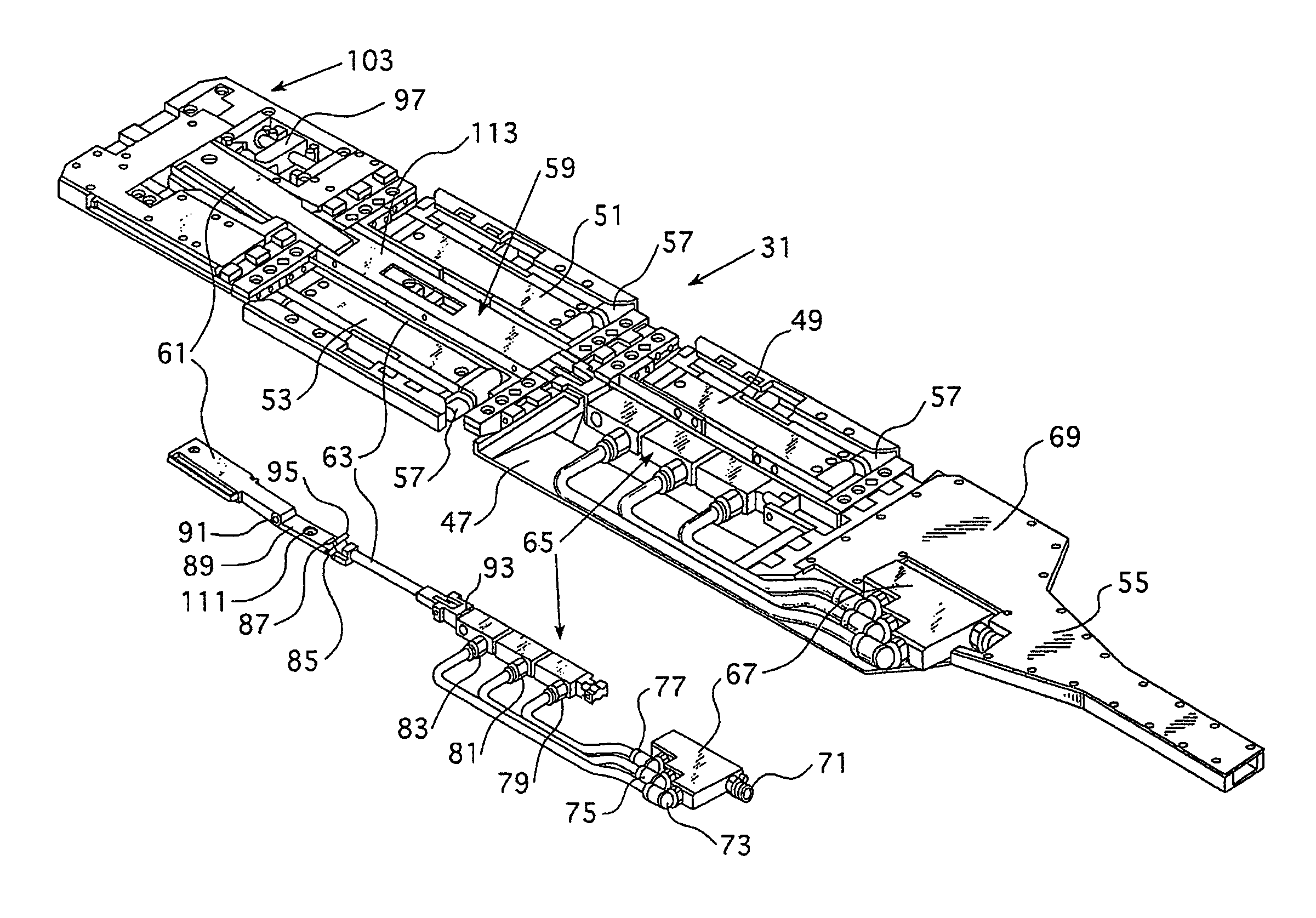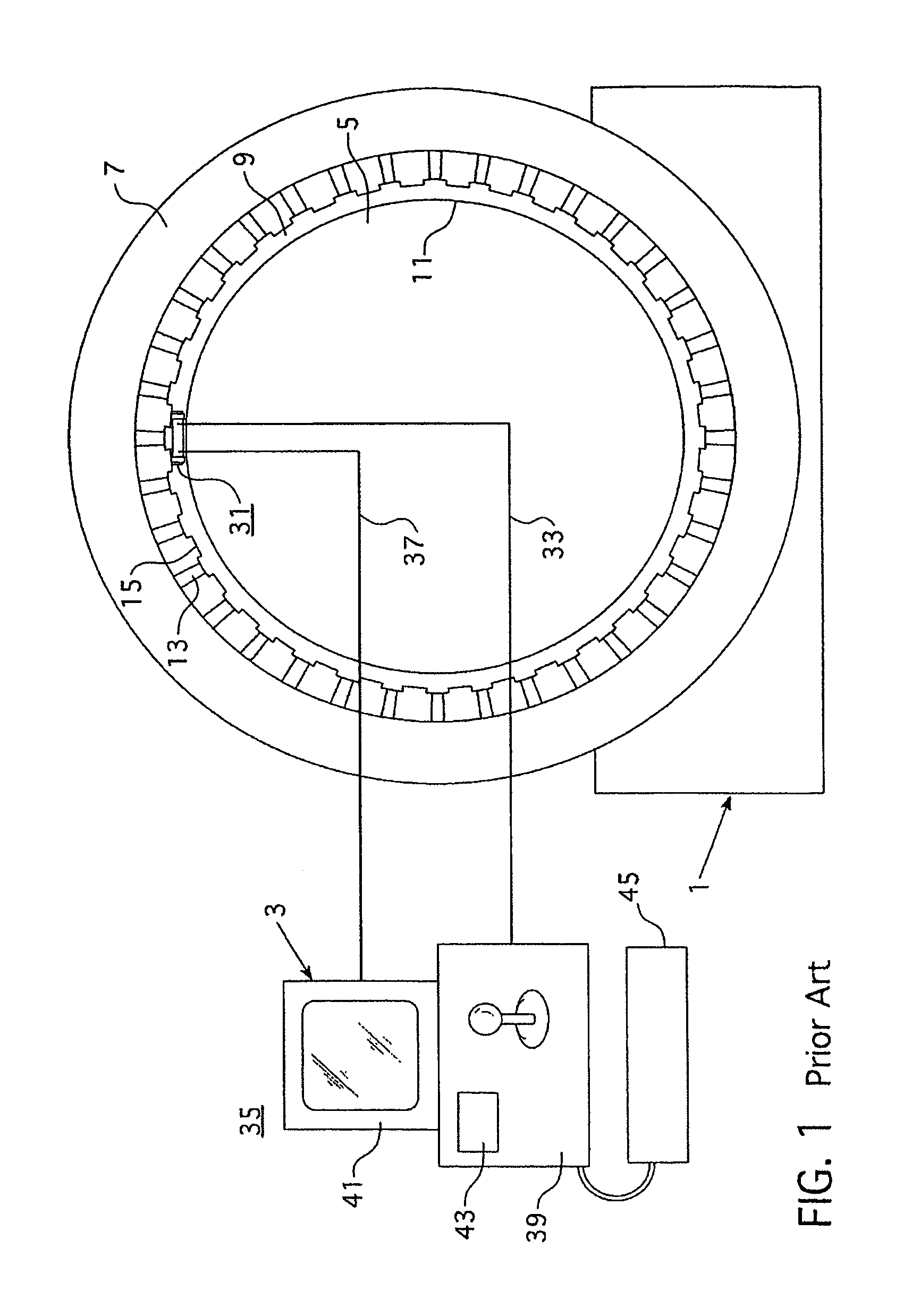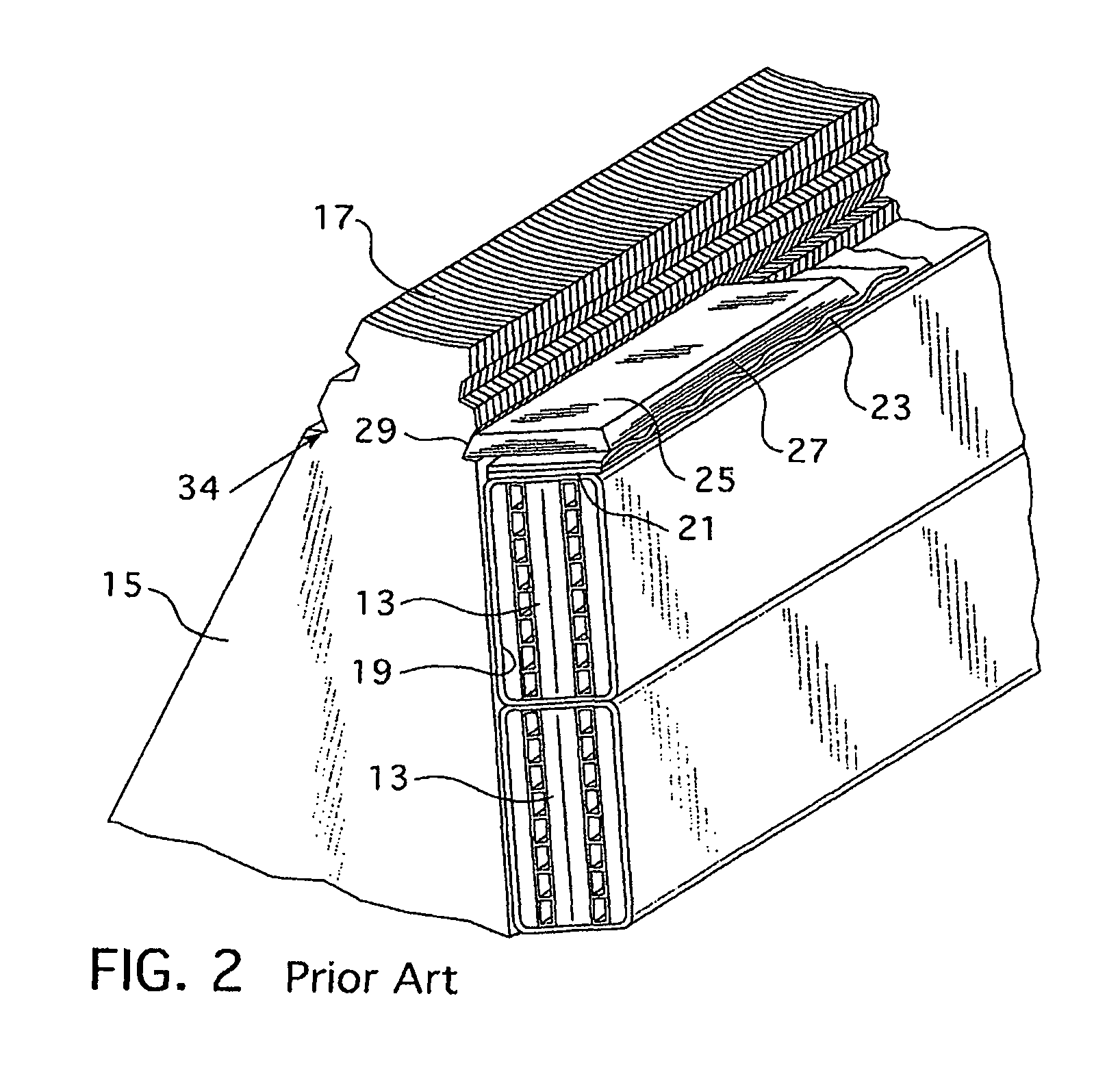Apparatus for impact testing for electric generator stator wedge tightness
a technology for stator wedges and electric generators, which is applied in the direction of structural/machine measurement, instruments, transportation and packaging, etc., can solve the problems of stator mica insulation failure, coil grounding or “flashover” of coils, and time-consuming these tests
- Summary
- Abstract
- Description
- Claims
- Application Information
AI Technical Summary
Benefits of technology
Problems solved by technology
Method used
Image
Examples
Embodiment Construction
[0025]FIG. 1 schematically illustrates a large steam turbine driven electric power generator 1 with the inspection system 3 of the invention in place for measuring generator stator wedge tightness. The generator 1 includes a rotor 5 mounted for rotation within a stator 7. A narrow air gap 9 is formed between the rotor retainer ring 11 and the stator. In some electric generators, this gap 9 can be as narrow as 0.6 inches (1.52 cm). The stator 7 includes stator coils 13 positioned between longitudinally extending stator teeth 15.
[0026]As shown more clearly in FIG. 2, the stator teeth 15 which are made of laminations 17 form stator slots 19 in which stator coils 13 are stacked in pairs, one on top of the other. The stator coils 13 are retained in the slots 19 by shims 21, sections of ripple springs 23, and stator wedges 25 having beveled edges 27 which engage correspondingly shaped grooves 29 in the sidewalls of the stator teeth 15. The ripple spring sections 23 are compressed between ...
PUM
 Login to View More
Login to View More Abstract
Description
Claims
Application Information
 Login to View More
Login to View More - R&D
- Intellectual Property
- Life Sciences
- Materials
- Tech Scout
- Unparalleled Data Quality
- Higher Quality Content
- 60% Fewer Hallucinations
Browse by: Latest US Patents, China's latest patents, Technical Efficacy Thesaurus, Application Domain, Technology Topic, Popular Technical Reports.
© 2025 PatSnap. All rights reserved.Legal|Privacy policy|Modern Slavery Act Transparency Statement|Sitemap|About US| Contact US: help@patsnap.com



